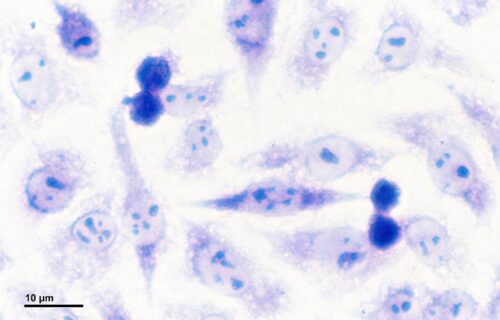Image Courtesy of Wikimedia Commons.
The highly invasive nature of the human placenta, which embeds deeply into a mother’s endometrium, starkly contrasts with placental structures found in other animals. The invasiveness of a species’ placenta—the organ that provides nutrients and oxygen to a developing fetus—may play into susceptibility to cancer. “Cows, with their less invasive placentas, do not suffer from metastasizing cancer, highlighting a significant evolutionary divergence from humans, whose deeply invasive placentas make them much more susceptible to malignant cancers,” explained Anasuya Dighe, a bioinformatics scientist at the Yale Systems Biology Institute. This sparks a critical question: Why does placental invasion correlate with an organism’s vulnerability to cancer cell invasion? A study led by Dighe in the lab of Yale professor Günter Wagner attributed this phenomenon to evolutionary changes in gene expression within dermal skin fibroblasts (SFs) and uterine endometrial stromal fibroblasts (ESFs), which are cell types instrumental in the formation of connective tissue.
The researchers conducted a comparative transcriptomic analysis, which compared gene expression patterns across nine mammalian species and cultured fibroblasts—central cells in connective tissue—from genetically engineered mice. They found significant correlations between gene expression in SFs and ESFs, suggesting that evolutionary changes in gene expression in the uterus are mirrored in skin fibroblasts. These findings suggested that the mechanisms facilitating placental invasiveness in mammals may simultaneously heighten susceptibility to metastatic cancer, potentially explaining heightened resistance to metastasis in cows.
The study may open pathways to targeted research in cancer therapeutics. “What we could aim for is to learn from the cow how to manipulate the human cells to be more resistant to the spread of cancer,” said Wagner, the senior author of the paper. He envisions a future where manipulating human cells to emulate cancer-resistant traits becomes a reality, transforming the potential of cancer therapies.

